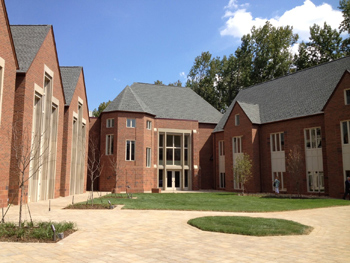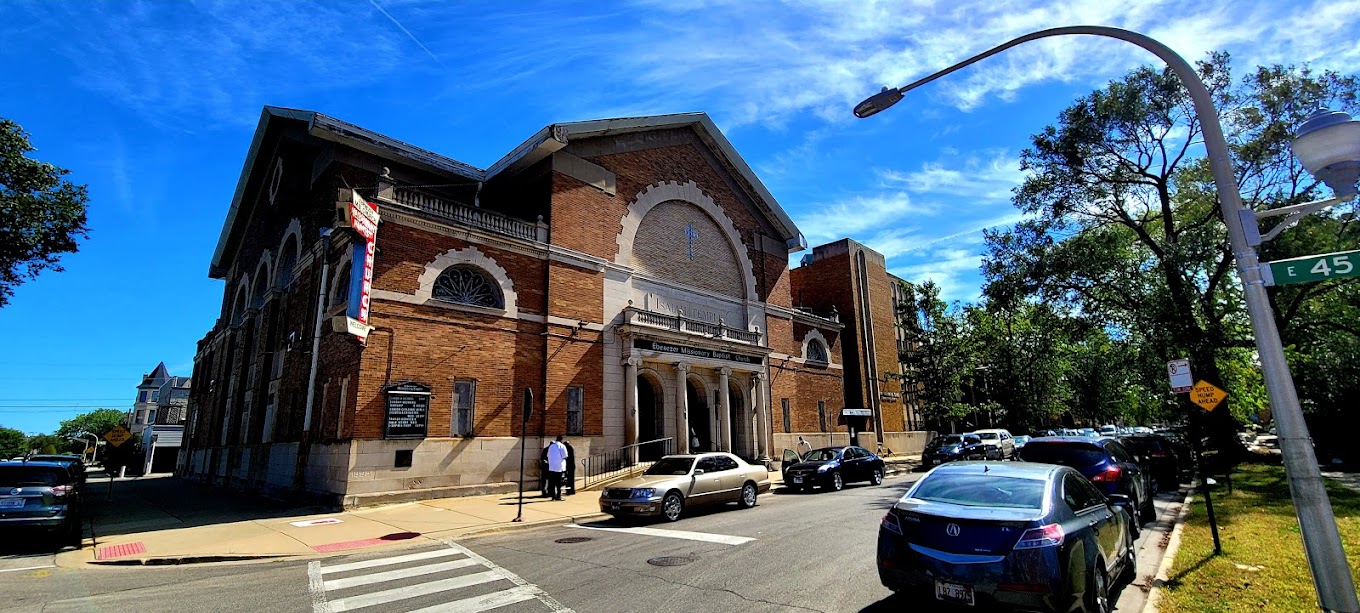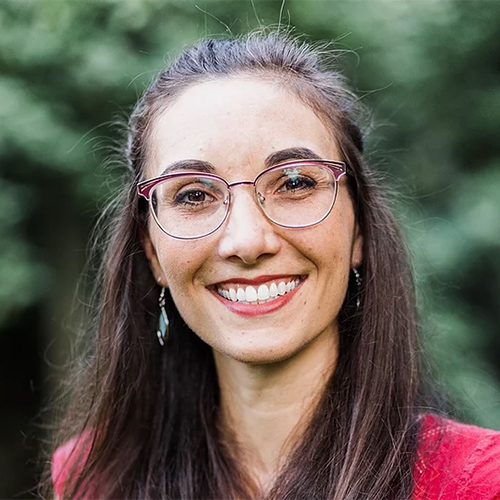The challenge came immediately after I became president of Union Theological Seminary in the summer of 1994: Merge with the Presbyterian School of Christian Education! Three years later, the two venerable but financially struggling institutions had become one.
The process was difficult, but the results were worth it. When I retired a decade later, in 2007, we could celebrate gains in enrollment; excellent morale among the faculty, administration and staff; a donor base of congregations and individuals that had doubled; two successful capital campaigns; and a thriving new satellite campus in Charlotte, N.C. -- all of which was possible largely because of the creation of a stronger, single institution.
I hope that by sharing the story of our merger and some lessons gained from the experience I can help those in leadership today as the economic crisis prompts seminaries to contemplate the same course of action.
Union Theological Seminary in Virginia, created in 1812 by Presbyterians in Virginia and North Carolina, was for decades the flagship school for Southern Presbyterians (PCUS). In 1994, it had a strong board of trustees and a good faculty. With an enrollment of 250, it attracted some fine students, a number of whom were simultaneously enrolled in a dual-degree program with PSCE.
However, it had no strategic plan at an institutional level. Leaders held conflicting visions for its future. It suffered from a shrinking donor base, a languishing capital campaign. And it drew down more than 7 percent that year from an endowment of $55 million.
The Presbyterian School of Christian Education was the last independent graduate school in the world for Christian educators, poor but proud. It was fast depleting its resources; in 1994, it spent more than 13 percent from its $3 million endowment. The school counted fewer than 100 students in the master of Christian education program and a modest Ed.D. program.
By 1994, the need for action was obvious, and private conversations about combining the two institutions had begun a year earlier. Some on the PSCE board and in the administration had been advised that its demise was close at hand. Union Seminary, for its part, had full-time staffs in development and communications, resources for administration of finances and student services. Letting PSCE die would be viewed as Union’s institutional sin by most Southern Presbyterians.
When I took office at Union, I greeted the prospect of creating one institution with optimism, for I had deeply appreciated the ministries of PSCE faculty and graduates through the years. I had collaborated with many of them in the writing of curriculum for faith development, and I admired their wisdom and experience in providing leadership development for Reformed churches in many countries.
Blending the schools would encourage school leaders and constituents to proclaim a moderate, ecumenical vision of what Reformed theological education should afford the church and world.
Since PSCE had been formed from, and served primarily, the same Southern Presbyterian constituency as did Union, it might appear less difficult to bring them together that it would be to combine seminaries of disparate traditions.
But it wasn’t. For more than 70 years, the two institutions had built firm alliances and mutual loyalty among majorities of alums, and also had developed among others deep feelings of division and even antipathies.
This was fueled in large measure by the fact that the (mostly) men from Union, better supported financially as students, could become ordained pastors. The (mostly) women from PSCE struggled financially both as students and as professional church workers not permitted ordination. (Women pastors were first ordained in 1965, but few congregations called them until the 1980s.) Many students and graduates of PSCE considered their professional lives -- lay status as Christian educators, vulnerability as non-ordained church staff and lower wages than pastors -- marks of sacrificial Christian discipleship. “As Christian soldiers, we are ‘God’s irregulars,’” one PSCE faculty member regularly proclaimed.
Against this backdrop, friends at Lilly Endowment Inc. providentially had shared with me a typescript of Ronald Heifetz’s book “Leadership Without Easy Answers” in anticipation of my transition. In it, Heifetz says leaders need to alternate between participating and observing. He calls it “getting on the balcony,” not just “being in the dance on the floor.”
At the recommendation of Union’s board chair, I “got on the balcony” to envision what the new school would optimally be in personnel, programs of study and organization. I shared my draft with him and invited his editing; later, we showed it to our team of three consultants, who gradually developed the formal “Plan for Federation.”
Eventually, we came to include others in that “balcony” process. When Heifetz’s book was available, I gave copies to my executive staff and some board members, inviting them to think about other wisdom that would help in the process.
I also visited several foundations that fall, and I drafted grant proposals acceptable to both administrations so we could secure funding and external approbation for the process.
Negotiations began quietly in spring 1995. We announced our intentions that fall. Working with our consultants, we formed a joint faculty group to explore the nature of Christian leadership, a necessary talent for both pastors and educators. And a joint committee of 10 trustees -- five selected by each board -- was appointed. Faculty, students and alumni/ae from both schools had opportunities to make suggestions and ask questions about the process and the intended outcome.
We told as much of the truth as we thought constituencies could bear, following Heifetz’s advice about “regulating the distress.” I learned from disastrous early efforts that the consultants needed to do the lion’s share of the public speaking. People rightly saw me as already committed to one of the institutions.
We shared word of the process, the implications and the potential positive outcomes for students and faculty. Gradually, the plans were explained as the joint committee, consultants and I thought people were ready to hear them. We held open board meetings in which votes would occur -- all choreographed to present truthful information in transparent fashion to all.
We referred to the process as a “federation.” One consultant, wise veteran from leadership in several schools, joked in public that alums did not like the word “merger,” even less approved the word “marriage.” So they settled on the term “federation.” As he said, “People choked on all the ‘M’ words, so we had to use the ‘F’ word.”
Another consultant, the Christian education professor from Austin Seminary and a graduate of PSCE with both degrees, told us that the name for the new institution mattered greatly. “It will save a year of negotiation,” she said, “if we use the infelicitous but accurate Union-PSCE.” Our legal name became Union Theological Seminary and Presbyterian School of Christian Education.
The third member of the consulting team, more knowledgeable than anyone else concerning the financial situations of North American seminaries, plotted various scenarios -- income, student demography, rates of return on endowment, etc. -- for achieving solvency.
The boards moved quickly. We considered time of the essence, especially as PSCE endowment and reserves diminished each month. I learned also that resistance increased with prolonged discussions. A vocal minority of independent-minded alums of PSCE grew more indignant and better organized as the weeks passed. Board members and consultants were increasingly anxious to conclude.
Eighteen months from the public announcement, in May 1997, the federation was effected by votes of both boards of trustees. We secured the votes almost simultaneously, in accord with the legal transactions of dissolving PSCE and reconstituting it as Union-PSCE.
The results were immediate: We managed to finish our second year of Union-PSCE, fiscal 1999, with a balanced budget, drawing 6 1/2percent on the endowment -- still too much, but less than Union by itself had drawn when the process began. We completed a $26 million campaign, and student enrollment in the fourth year of federation exceeded that of the two schools in the year negotiations began.
From this process, I learned a number of lessons about the process of merger as well as leadership generally:
Prayer and worship together are crucial. We already engaged in some joint chapel services, but we began praying for one another regularly and celebrating together in worship and work regularly before the formal actions took place.
Teamwork is mandatory . Nothing new there. In this case, it involved both seminaries’ administrations, boards, student bodies, staff and loyal alums repenting of previous bouts of condescension on the one side and resentment on the other. The gracious president of PSCE resigned and quickly received a call from a church as a pastor.
Trust is essential. Elementary, likewise. The two chairs of boards worked quietly -- very quietly -- at first to sketch the skeleton of the process. The joint committee built trust quickly and maintained confidentiality throughout. Foundations trusted us and made grants that increased the momentum for change. Student body leaders trusted one another, and they quickly elicited trust from their constituencies.
Language is important. I worked to locate the “soul” of PSCE and phrase it for everyone. Naming and advocating for the “soul” of PSCE for everyone helped build solidarity, for everyone wanted that “soul” in the new institution. Alumnae and alumni of PSCE described its uniqueness by way of contrast: “At most schools you learn Bible, theology, ethics and the rest. At PSCE you learn the subjects, and at the same time you learn how to teach them to others.” I adopted their language and spoke of their unique nature of instruction. Likewise, the exceptionally fine dean of PSCE learned to phrase precisely the distinctive qualities of Union, promoting confidence that strong academic standards would be maintained.
The “view from the balcony” helped immensely. The Plan for Federation did not duplicate my early document envisioning the final result, but it resembled it closely.
Good consultants were essential. Their currency with supporters of both institutions, their untiring service and their insights kept the negotiations moving to closure. We worked with three people who knew both institutions. Their reputations and cooperation helped secure the grants that supported their costs.
We “gave the work back to people,” as Heifetz phrases it. Faculty members were pleased to form the joint task force. They willingly sorted out the committee structure and equivalency issues for the new institution. Student leaders jumped at the opportunity to form one student body. (Though it must be said that alum organizations moved more slowly.)
We kept the structure as simple as possible. “If you see a snake, kill it!” was the apt but ecologically challenged phrase of one wise trustee that became a mantra for simplicity in all organization. We created one budget, one faculty, one pay scale, one flat administrative structure and one student body.
No doubt there will always be some people who disagree with me that the merger was a success. But I am proud of what we did. Ten years later, when I retired, we had more students, greater financial support, more supporters praying for our welfare, another successful capital campaign completed, accredited degree programs in Charlotte -- and almost a thousand graduates of Union-PSCE.














